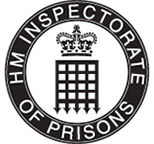Rape Monitoring Group digests
Part of: Police engagement with women and girls Protecting people from violence and abuse Victims and resolutions
The Rape Monitoring Group (RMG) was a multi-agency group in England and Wales, co-ordinated by HMICFRS. It was established in 2007 to promote improvements in response to rape across the criminal justice system.
Between 2013 and 2020, the RMG published data from all 43 police forces areas in England and Wales and the British Transport Police. This data showed how cases of rape were dealt with at all stages of the criminal justice process.
The RMG stopped meeting in 2020. More recent data can now be found via the CJS dashboard, which includes data that shows progressions towards the ambitions set out in the 2021 Rape Review. The data HMICFRS published can be found below.
Publications
From 2017 to 2020, the RMG published data in an interactive dashboard. This dashboard is no longer available. Data showing outcomes for rape and sexual offences can now be found on the Home Office website in the Police recorded crime and outcomes open data tables.
From 2013 to 2016, data was published in the form of individual police force area digests. These digests are available in the publications section of the HMICFRS website.
RMG data
The data brought together Home Office data (published by the Office of National Statistics) with data from the Crown Prosecution Service (CPS) and the Ministry of Justice (MoJ).
The data was gathered from different sources, over different timescales. This made tracking the results of specific cases difficult. What it did show was the scale of reported rape and the variation of outcomes.
Detailed caveats provided clarity where comparisons could be made, and clarified why comparisons may be harder to make.
For the complete data sheets, please see the RMG data webpage.
A note of caution in using the data
The numbers can’t ever tell the whole story. An increase in recording of rape may not be due to an increase in prevalence, but rather improvements in how the police record crimes, or may be because victims have more confidence in the criminal justice system.
Similarly, a reduction in recorded rapes may mean that victims are losing confidence in the authorities to treat them sensitively or, conversely, that police preventative strategies are working to reduce rape offending.
Reporting and convictions of rape
Rape cases not resulting in a conviction
There are many reasons why a reported rape may not continue to conviction; for example:
- the victim does not wish for the case to proceed, for reasons such as fear of giving evidence in court;
- the CPS advises that no further action be taken;
- the offence is changed to something other than rape; and
- the defendant is acquitted by a jury following a trial.
Cases involving sexual offences can often, by their nature, lack corroborating evidence, and in cases concerning two adults, can come down to complex decisions around consent and one person’s word against another. The process of investigation, charging decisions and preparing for court, and the trials themselves, can be very lengthy and involve scrutiny of the victim not seen for other offences.
At any time, victims may wish to withdraw from the process for:
- fear of giving evidence in court;
- fear that the process will be too distressing;
- fear of being disbelieved or judged; or
- as a result of delays.
Other factors in assessing the quality of response to rape
Convictions of the guilty are extremely important outcomes, but they are not the only important outcome for victims of rape.
For example, victims of rape in childhood sometimes disclose non-recent offences, not with a view to a prosecution, but because they have discovered the perpetrator may now have access to other children. A criminal prosecution may not be the outcome they are seeking, but they rightly expect police and other agencies to prevent reoffending.
In other circumstances victims of domestic abuse that involves rape may prioritise protection from violence and safeguarding over prosecution.
Under-reporting of rape
It is widely recognised that rape is under-reported, with many more rapes committed than are reported to and recorded by the police.
The data held by the criminal justice system can therefore only provide a partial picture of the prevalence of rape.
In April 2015 the Home Office, working with the National Police Chiefs’ Council, established a statistical classification for allegations of rape made to police but which don’t result in the recording of a crime.
This is classification N100 (reported incident of rape) in the Home Office Crime Counting Rules. Police are expected to record all allegations of rape they receive under this classification unless they immediately record the matter as a crime.
Framing the right questions
The data prompted important questions for organisations responsible for dealing with rape such as the police (including police and crime commissioners), Crown Prosecution Service and Ministry of Justice.
For example:
- What is being done to understand the nature and scale of rape in local communities, as well as regional and national trends?
- When areas are compared with each other, why does the data vary widely?
- What targeted prevention work happens?
- What are the police and other agencies doing to encourage victims of rape to come forward?
- How are resources deployed to tackle rape effectively and efficiently?
- How experienced and well-trained are staff who deal with rape? In particular, do/will staff be trained on the matter of consent?




